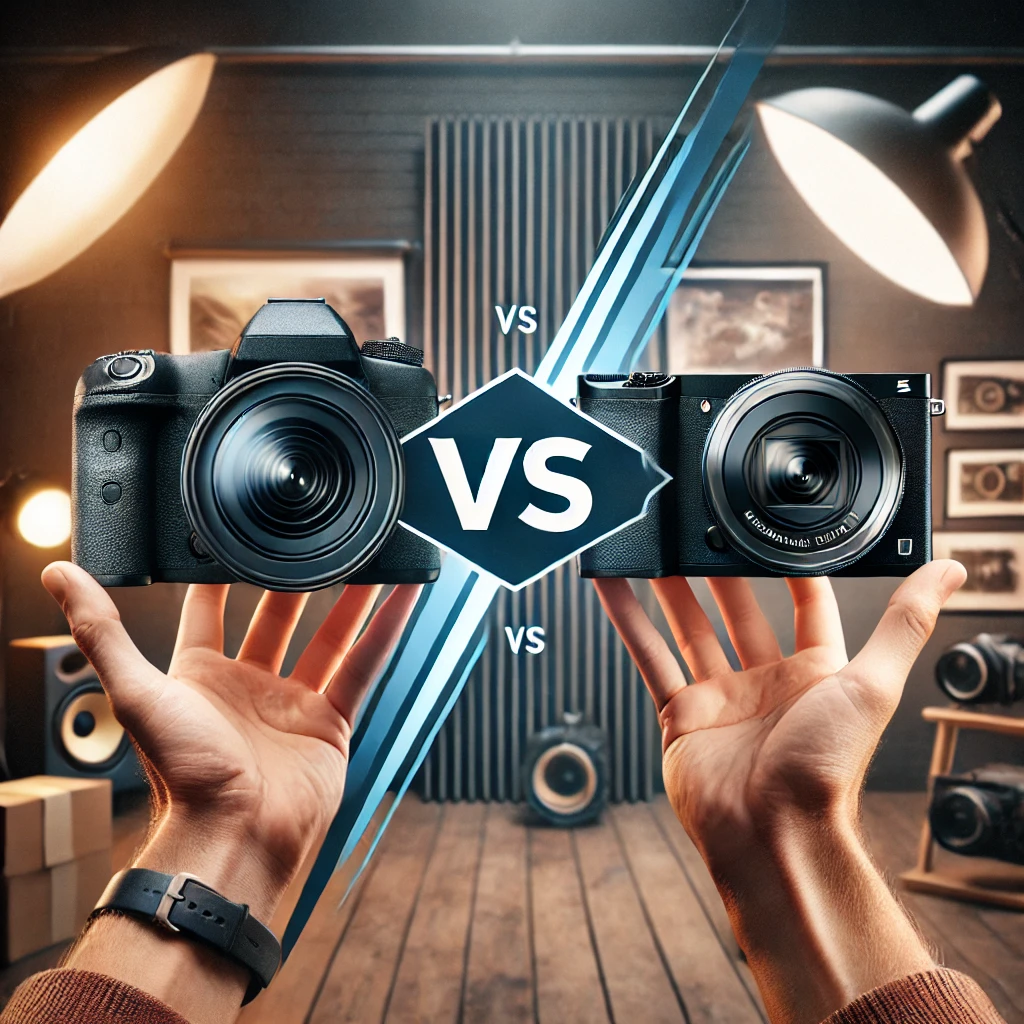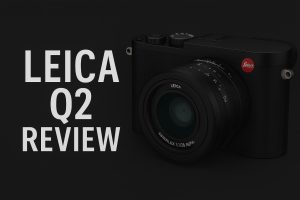Choosing the right camera can be overwhelming, especially with the rise of mirrorless cameras challenging the long-standing dominance of DSLRs (Digital Single-Lens Reflex). Each camera type has its strengths and weaknesses, making it crucial to assess your needs before making a decision. In this comprehensive guide, we’ll break down the key differences, advantages, and limitations of DSLR vs. mirrorless cameras to help you find the best fit for your photography style.
Understanding the Basics: DSLR vs. Mirrorless
What is a DSLR?
A DSLR (Digital Single-Lens Reflex) camera uses a mirror and optical viewfinder system. When you press the shutter button, the mirror flips up, allowing light to reach the sensor.
Key Features of a DSLR:
- Optical Viewfinder: Provides a real-time, natural view of the scene.
- Interchangeable Lenses: Supports a vast range of lenses.
- Larger Body: More ergonomic but heavier.
- Battery Life: Longer battery performance due to minimal electronic usage.
What is a Mirrorless Camera?
A mirrorless camera lacks the mirror mechanism of a DSLR. Instead, it uses an electronic viewfinder (EVF) or LCD screen to display the image in real-time.
Key Features of a Mirrorless Camera:
- Electronic Viewfinder or LCD: Displays an accurate digital preview.
- Compact Size: Lighter and more portable.
- Fast Autofocus: Advanced contrast-detection and phase-detection autofocus.
- High Frame Rate Shooting: Ideal for sports and wildlife photography.
Pros and Cons of DSLR vs. Mirrorless
Pros of DSLR Cameras
✅ Better Battery Life: Optical viewfinders consume less power. ✅ Extensive Lens Selection: Decades of lens compatibility. ✅ Superior Optical Viewfinder: No lag, real-time scene preview. ✅ More Ergonomic: Larger grip, comfortable for extended use.
Cons of DSLR Cameras
❌ Heavier and Bulkier: Less portable. ❌ Slower Autofocus in Live View: Phase detection in DSLRs is slower than mirrorless autofocus. ❌ Limited Video Features: Most DSLRs lack high-end 4K video features.
Pros of Mirrorless Cameras
✅ Compact and Lightweight: Easier to carry for travel and street photography. ✅ Faster Autofocus: Uses hybrid autofocus for speed and accuracy. ✅ Better Video Capabilities: 4K and high-frame-rate options. ✅ Silent Shooting: Perfect for events and wildlife photography.
Cons of Mirrorless Cameras
❌ Shorter Battery Life: EVFs and LCD screens consume more power. ❌ Fewer Lens Options: Growing but still less than DSLR lenses. ❌ Overheating in Video Mode: Some models struggle with prolonged 4K video recording.
Side-by-Side Comparison: DSLR vs. Mirrorless
| Feature | DSLR | Mirrorless |
|---|---|---|
| Size & Weight | Bulky | Compact & Lightweight |
| Autofocus Speed | Slower in Live View | Faster & More Accurate |
| Lens Selection | Wide Range | Growing Selection |
| Battery Life | Longer | Shorter |
| Video Quality | Decent (Mostly 1080p) | Excellent (4K & High FPS) |
| Shooting Speed | Slower | Faster Burst Mode |
| Viewfinder Type | Optical | Electronic (EVF or LCD) |
Which One is Best for Your Needs?
1. Travel & Street Photography
📸 Best Option: Mirrorless
- Lightweight and portable.
- Silent shooting for candid shots.
- Fast autofocus for moving subjects.
2. Portrait & Studio Photography
📸 Best Option: Both
- DSLR offers a wide lens selection and superior optics.
- Mirrorless provides precise face and eye detection autofocus.
3. Wildlife & Sports Photography
📸 Best Option: Mirrorless
- High-speed continuous shooting modes.
- Advanced subject-tracking autofocus.
- Compact size helps in quick movements.
4. Landscape Photography
📸 Best Option: Both
- DSLRs excel in optical quality and dynamic range.
- Mirrorless cameras provide high-resolution sensors with live exposure preview.
5. Videography
📸 Best Option: Mirrorless
- Advanced 4K video capabilities.
- Faster autofocus in video mode.
- Lighter gear for handheld shots.
Future of DSLR vs. Mirrorless
Mirrorless technology is advancing rapidly, with brands like Sony, Canon, and Nikon focusing on mirrorless innovations. DSLR cameras still hold their ground with professionals who value battery life, durability, and optical performance.
Should You Buy a DSLR in 2024?
- If you already own DSLR lenses, investing in a high-end DSLR body might be a good choice.
- If you prefer optical viewfinders, go for DSLRs.
- If battery life is crucial, DSLRs are a better option.
Should You Buy a Mirrorless Camera?
- If you need compact gear, mirrorless cameras are unbeatable.
- If you want cutting-edge autofocus and video features, mirrorless is the way to go.
- If you prefer real-time exposure previews, choose mirrorless.
Conclusion: Which One Should You Choose?
📢 For beginners: Mirrorless cameras are more user-friendly and compact. 📢 For professionals: DSLRs offer reliability and a vast range of lenses. 📢 For videographers & travelers: Mirrorless is the clear winner.
Ultimately, the choice between DSLR vs. Mirrorless depends on your priorities. Both camera types have their strengths, and with the right knowledge, you can capture stunning images no matter which one you choose!

Mobile Photography Hacks: Candid Moments with Your Phone

Professional Model & Portfolio Photoshoots: Show Your Best Work
-

Street Photography Tips, Effects & Poses – Complete Guide
-

Leica Q2 for Photography: Why It’s Loved by Photographers
Mobile Photography Hacks: Candid Moments with Your Phone
Discover high-impact mobile photography hacks to capture genuine, gorgeous candid moments with your phone. Learn practical tips, composition secrets, and pro techniques to turn everyday scenes into stunning visual stories. Introduction: The New Age of Mobile Photography Photography has evolved beyond heavy cameras, technical jargon, and expensive equipment. Today, the power to capture extraordinary moments
Professional Model & Portfolio Photoshoots: Show Your Best Work
” Discover how to plan, style, and execute stunning portfolio photoshoots that showcase your skills, personality, and versatility. This comprehensive guide covers professional tips, posing ideas, gear suggestions, and industry insights for models and photographers.” Introduction – Why Portfolio Photoshoots Are the Cornerstone of a Photographer’s Career A well-crafted portfolio photoshoot is more than a
Street Photography Tips, Effects & Poses – Complete Guide
Discover the ultimate guide to Street Photography with expert tips, creative effects, and dynamic poses. Learn how to capture authentic urban moments, master composition, and tell powerful visual stories through your lens. Article Outline 1. Introduction to Street Photography Street Photography is more than just taking pictures of people in public spaces — it’s about
Leica Q2 for Photography: Why It’s Loved by Photographers
Introduction: The Cult Status of the Leica Q2 The Leica Q2 is not just a camera—it’s a statement. Combining the heritage of German precision engineering with modern digital excellence, it holds a special place in the hearts of professional and passionate photographers alike. With its full-frame sensor, prime Summilux lens, and minimalist design, the Q2
Top Cameras Under ₹1 Lakh for Freelance Photography
Freelance photography is no longer a niche—it’s a booming creative profession that demands not only vision and hustle but also the right gear. Your camera isn’t just a tool; it’s your storytelling partner. If you’re a freelance photographer aiming to balance performance, versatility, and budget, investing in a cameras under ₹1 lakh can offer the
Top Features of Nikon D850 That Make It Ideal for Photoshoots
Explore the top features of the Nikon D850 that make it a powerhouse for photoshoots. From exceptional resolution to dynamic range, this detailed Nikon D850 guide is built for professional and aspiring photographers. 1. Introduction When Nikon launched the D850, it quickly earned a reputation as a flagship DSLR that redefined what photographers could expect






